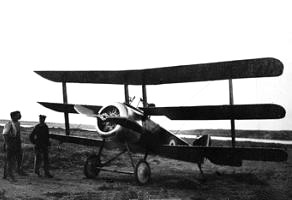Alcock Scout on:
[Wikipedia]
[Google]
[Amazon]
 The Alcock Scout, a.k.a. A.1 and Sopwith Mouse, was a curious "one-off" experimental fighter
The Alcock Scout, a.k.a. A.1 and Sopwith Mouse, was a curious "one-off" experimental fighter
 The Alcock Scout, a.k.a. A.1 and Sopwith Mouse, was a curious "one-off" experimental fighter
The Alcock Scout, a.k.a. A.1 and Sopwith Mouse, was a curious "one-off" experimental fighter biplane
A biplane is a fixed-wing aircraft with two main wings stacked one above the other. The first powered, controlled aeroplane to fly, the Wright Flyer, used a biplane wing arrangement, as did many aircraft in the early years of aviation. While ...
flown briefly during World War I
World War I (28 July 1914 11 November 1918), often abbreviated as WWI, was one of the deadliest global conflicts in history. Belligerents included much of Europe, the Russian Empire, the United States, and the Ottoman Empire, with fightin ...
. It was assembled by Flight Lieutenant
Flight lieutenant is a junior commissioned rank in air forces that use the Royal Air Force (RAF) system of ranks, especially in Commonwealth countries. It has a NATO rank code of OF-2. Flight lieutenant is abbreviated as Flt Lt in the India ...
John Alcock at Moudros
Moudros ( el, Μούδρος) is a town and a former municipality on the island of Lemnos, North Aegean, Greece. Since the 2011 local government reform it is part of the municipality Lemnos, of which it is a municipal unit. It covers the entire eas ...
, a Royal Naval Air Service
The Royal Naval Air Service (RNAS) was the air arm of the Royal Navy, under the direction of the Admiralty's Air Department, and existed formally from 1 July 1914 to 1 April 1918, when it was merged with the British Army's Royal Flying Corps t ...
base in the Aegean Sea
The Aegean Sea ; tr, Ege Denizi (Greek language, Greek: Αιγαίο Πέλαγος: "Egéo Pélagos", Turkish language, Turkish: "Ege Denizi" or "Adalar Denizi") is an elongated embayment of the Mediterranean Sea between Europe and Asia. It ...
. Alcock took the forward fuselage and lower wings of a Sopwith Triplane
The Sopwith Triplane was a British single seat fighter aircraft designed and manufactured by the Sopwith Aviation Company during the First World War. It has the distinction of being the first military triplane to see operational service.
The ...
, the upper wings of a Sopwith Pup
The Sopwith Pup is a British single-seater biplane fighter aircraft built by the Sopwith Aviation Company. It entered service with the Royal Naval Air Service and the Royal Flying Corps in the autumn of 1916. With pleasant flying characteristi ...
and the tailplane and elevators of a Sopwith Camel
The Sopwith Camel is a British First World War single-seat biplane fighter aircraft that was introduced on the Western Front in 1917. It was developed by the Sopwith Aviation Company as a successor to the Sopwith Pup and became one of the b ...
, and married them to a rear fuselage and vertical tail surface of original design (presumably by Alcock himself). It was powered by a 110 hp Clerget 9Z engine, and carried a .303 Vickers machine gun.
Affectionally referred to as the 'Sopwith Mouse' by Alcock and his fellow designers, Alcock never flew it himself, but squadron-mate FSL Norman Starbuck made a few flights in it, the first on 15 October 1917. However, it crashed in early 1918, was written off and never flew again.
Specifications (approximate)
Notes
Citations
References
* * * {{cite book , title=The Complete Book of Fighters , publisher=Salamander Books, location=Godalming, UK, pages=302 1910s British fighter aircraft Sesquiplanes Rotary-engined aircraft Aircraft first flown in 1917